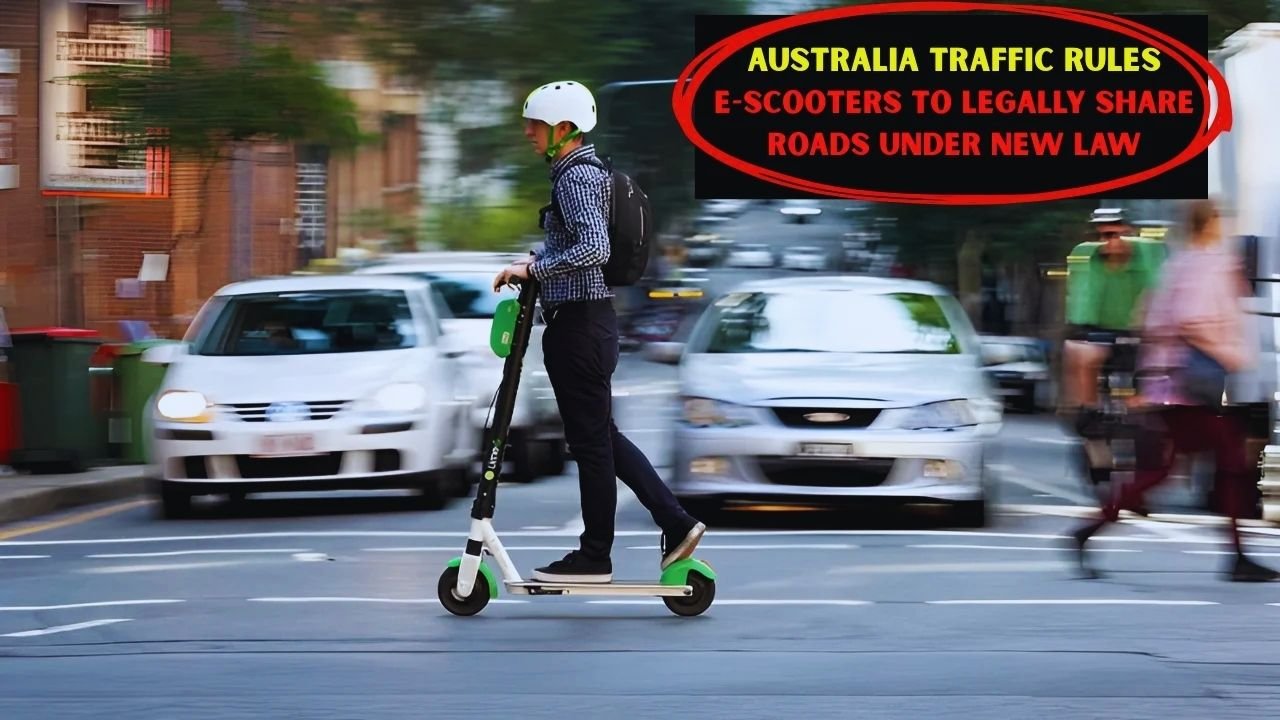Australia has taken a major step toward sustainable urban transport in 2025 by allowing e-scooters to legally share most roads and shared paths. After years of uncertainty, new laws now provide clear rules for riders, improving mobility options for short-distance travel while promoting safety and environmental benefits.
E-Scooter Road Rules Across Australia
The regulations for e-scooter use vary by state, including speed limits, age restrictions, and helmet requirements.
| State/Territory | Roads Allowed | Max Speed (km/h) | Age Limit | Helmet Required |
|---|---|---|---|---|
| South Australia | Yes (roads ≤ 60 km/h) | 25 | 16+ | Yes |
| New South Wales | Yes (roads ≤ 50 km/h) | 20 (10 on paths) | 16+ | Yes |
| Victoria | Yes (roads ≤ 60 km/h) | 20–25 | 16+ | Yes |
| Queensland | Yes (footpaths & roads) | 12–25 | 12+ (supervised <16) | Yes |
| Australian Capital Territory | Paths, roads if no safe path | 15–25 | No minimum (supervised) | Yes |
| Western Australia | Yes (roads ≤ 50 km/h) | 10–25 | 16+ | Yes |
State-by-State Rules
- South Australia: E-scooters are allowed on roads up to 60 km/h, bicycle lanes, and shared paths with speed limits of 10–25 km/h. Minimum age is 16, and helmets are mandatory.
- New South Wales: Legal on shared paths, bike lanes, and roads ≤ 50 km/h. Maximum speed: 20 km/h on roads, 10 km/h on paths.
- Victoria: Roads ≤ 60 km/h, bike lanes, and shared paths are allowed. Maximum speed: 20–25 km/h.
- Queensland & Western Australia: E-scooters permitted on footpaths and some local roads, with age and speed restrictions.
- Australian Capital Territory: Primarily allowed on paths; roads only if no alternative route exists.
Most states require helmet use, prohibit riding under the influence, and ban carrying passengers. Speed limits generally range from 10–25 km/h to protect riders and pedestrians.
Safety and Compliance
Safety is a top priority for e-scooter integration:
- Helmets and protective gear are mandatory in most states.
- Riding while intoxicated or using mobile phones is strictly prohibited.
- Approved e-scooter models must meet safety standards, including weight limits (around 45 kg) and safety devices like brakes and bells.
- Riders must park responsibly without blocking footpaths or shared spaces.
Benefits for Urban Mobility and the Environment
E-scooters provide multiple advantages for Australian cities:
- Reduced traffic congestion by offering short-distance alternatives to cars.
- Lower emissions by decreasing reliance on petrol and diesel vehicles.
- Better public transport integration for first- and last-mile connectivity.
- Sustainable transport options that support eco-friendly commuting.
Businesses and urban planners see e-scooters as an essential part of a modern transport mix, balancing convenience, safety, and environmental impact.
FAQs About E-Scooter Laws in Australia
Q1: Do e-scooters require a license or registration?
Yes, they are classified as motor vehicles in most states and may require registration and a license.
Q2: What are the speed limits for e-scooters?
Maximum speeds are generally below 30 km/h, varying by state and road type.
Q3: Where can e-scooters be ridden?
E-scooters are allowed on roads, bike lanes, and shared paths. Highways and roads above 60 km/h are generally prohibited.
Q4: Are helmets mandatory?
Yes, helmet use is required in almost all states for safety compliance.
Q5: Can e-scooters be used by children?
Age limits vary by state, with supervised riders allowed in some regions as young as 12.
Conclusion
Australia’s new e-scooter laws represent a major shift toward sustainable urban transport. By legalizing e-scooters on most roads and shared paths, the government has created safer, greener, and more convenient options for short-distance travel. Following the rules and prioritizing safety ensures e-scooters become a reliable part of the nation’s future mobility system.




